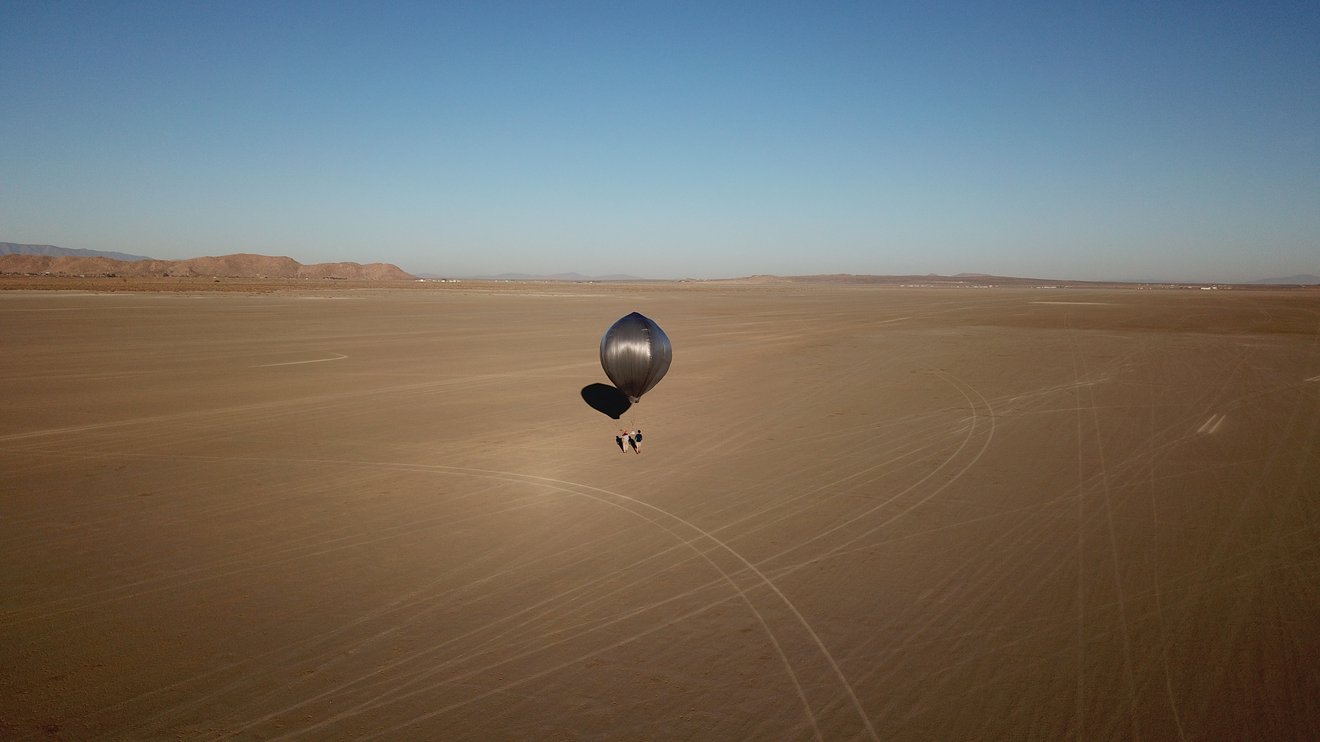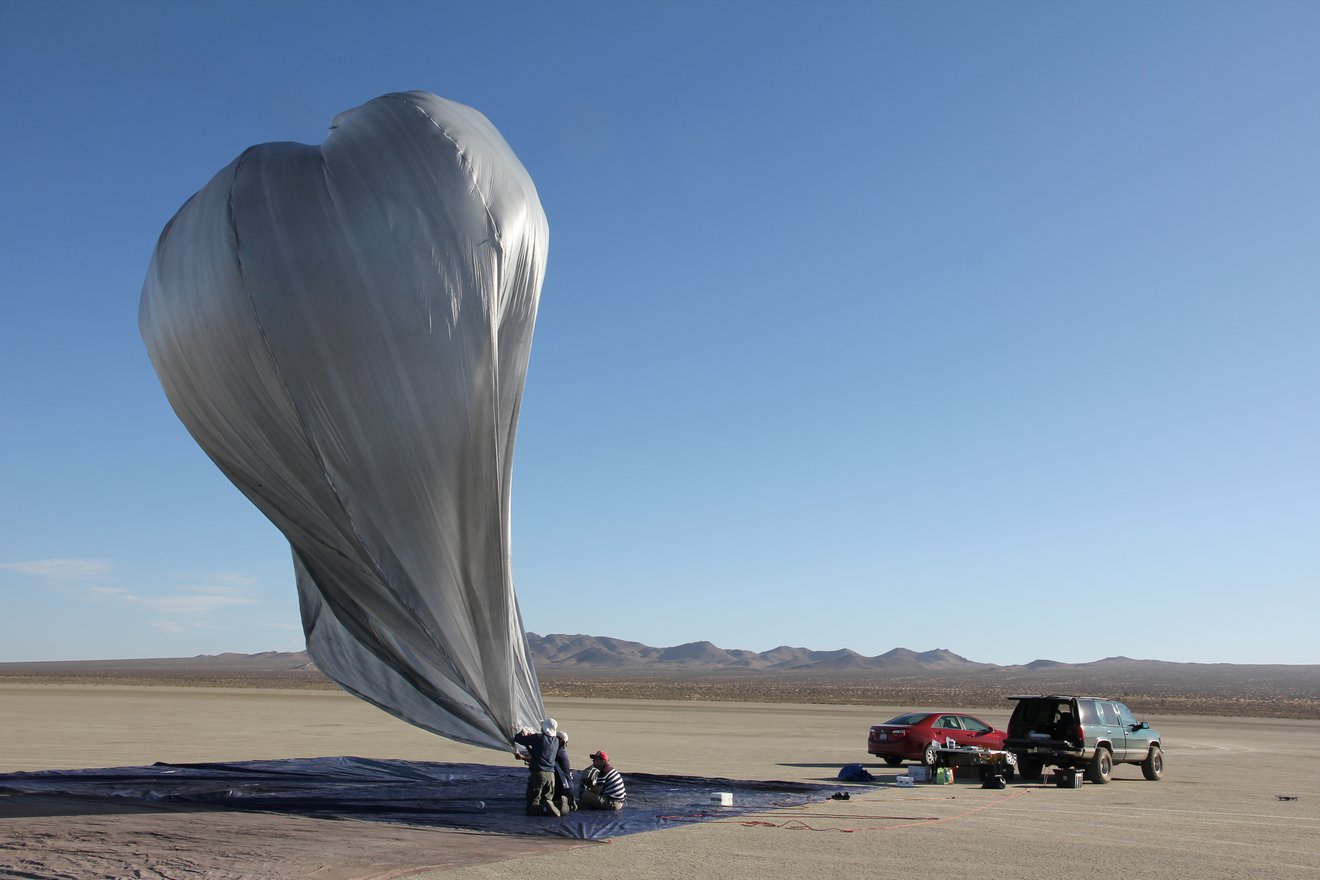Scientists just detected an earthquake from a balloon and might be able to do it on Venus, too
Scientists are one step closer to detecting venusquakes.

Researchers have detected an earthquake using instruments flying in a balloon above California, and the technology could one day detect quakes on Venus.
Temblors on Earth and beyond are a valuable tool for understanding how planets are built and what their interiors are doing, and scientists have measured both moonquakes and marsquakes. But venusquakes are going to be more difficult to detect than either moonquakes or marsquakes, simply because of how hostile the planet's surface is. No lander has operated on the Venusian surface for much more than two hours, so scientists are evaluating instruments that might detect venusquakes from the less hazardous environment of the planet's thick cloud deck.
"Much of our understanding about Earth's interior — how it cools and its relationship to the surface, where life resides — comes from the analysis of seismic waves that traverse regions as deep as Earth's inner core," Jennifer M. Jackson, a geologist at Caltech and a co-author on new research, said in a NASA statement.
Related: Why Venus is back in the exploration limelight
"Tens of thousands of ground-based seismometers populate spatially-dense or permanent networks, enabling this possibility on Earth. We don't have this luxury on other planetary bodies, particularly on Venus," Jackson said. "Observations of seismic activity there would strengthen our understanding of rocky planets, but Venus' extreme environment requires us to investigate novel detection techniques."
Measuring quakes on the moon and mars has been simple conceptually, albeit difficult to execute. The Apollo astronauts set up seismometers on the moon during their missions 50 years ago, and NASA's InSight lander on Mars includes a superbly precise such detector.
But for Venus, scientists think their best bet will be to design sensor systems that could identify quakes from the planet's atmosphere. Specifically, they're determining whether a balloon laden with barometers (instruments that measure atmospheric pressure) would be up to the task of venusquake detection.
Get the Space.com Newsletter
Breaking space news, the latest updates on rocket launches, skywatching events and more!
That technology isn't nearly ready to make the trek to our neighboring world. First, the scientists are playing around with the idea here on Earth. So in July 2019, when a powerful earthquake shook Ridgecrest, California, and spawned more than 10,000 aftershocks, scientists took advantage of the bevy of temblors to test balloon-lofted earthquake detection.

The trial relied on "heliotrope" balloons, which are special balloons that scientists set out early in the day. (For this research, the scientists nicknamed their balloons: Tortoise, Hare, Hare 2 and CrazyCat.) As the sun heats the balloon, it rises as high as 11 to 15 miles (18 to 24 kilometers); as twilight falls the balloon does as well and scientists can track down their equipment.
On each balloon was a device that tracks movement and a supersensitive barometer to measure air pressure and, the scientists hoped, detect low-frequency sound waves triggered by an aftershock. But the endeavor was tricky: The scientists needed an earthquake to occur while they were observing and to be strong enough for the balloon's barometer to detect it at such a great distance and amid mid-flight jostling.
"Trying to detect naturally occurring earthquakes from balloons is a challenge, and when you first look at the data, you can feel disappointed, as most low-magnitude quakes don't produce strong sound waves in the atmosphere," Quentin Brissaud, a seismologist at Caltech and the Norwegian Seismic Array (NORSAR) in Oslo, Norway, and the study's lead author, said in the same statement. "All kinds of environmental noise is detected; even the balloons themselves generate noise."
But on July 22, as both Tortoise and Hare were floating upward for a day of observations, a medium-size aftershock with a magnitude of 4.2 occurred. Both barometers picked up the signal, although the data on Hare's instrument included too much noise for the scientists to be confident it was truly detecting the earthquake. But Tortoise got a strong enough read on the event to match ground-based detections, even though the balloon was nearly 50 miles (78 km) away from the aftershock's epicenter and 3 miles (5 km) above Earth's surface at the time.

"Because there is such a dense network of seismometer ground stations in Southern California, we were able to get the 'ground truth' as to [the] timing of the quake and its location," Brissaud said. "The wave we detected was strongly correlated with nearby ground stations, and when compared to modeled data, that convinced us — we had heard an earthquake."
The researchers hope both to continue in-flight data collection on Earth, including observing different types of earthquakes under different atmospheric conditions. The scientists also want to start including multiple barometers on each balloon in order to pinpoint where a detected quake is coming from.
And the researchers say there's also lots of modeling to be done to understand how the technique might work on venusquakes.
"It should be easier to detect venusquakes from the cool layers of Venus' atmosphere between 50 to 60 kilometers [about 31 to 37 miles] in altitude," Siddharth Krishnamoorthy, principal investigator of the analysis effort at NASA's Jet Propulsion Laboratory in California, said in the same statement. "If we drift over a hotspot, or what looks like a volcano from orbit, the balloon would be able to listen for acoustic clues to work out if it's indeed acting like a terrestrial volcano,"
The research is described in a paper published May 20 in the journal Geophysical Research Letters.
Email Meghan Bartels at mbartels@space.com or follow her on Twitter @meghanbartels. Follow us on Twitter @Spacedotcom and on Facebook.
Join our Space Forums to keep talking space on the latest missions, night sky and more! And if you have a news tip, correction or comment, let us know at: community@space.com.

Meghan is a senior writer at Space.com and has more than five years' experience as a science journalist based in New York City. She joined Space.com in July 2018, with previous writing published in outlets including Newsweek and Audubon. Meghan earned an MA in science journalism from New York University and a BA in classics from Georgetown University, and in her free time she enjoys reading and visiting museums. Follow her on Twitter at @meghanbartels.









